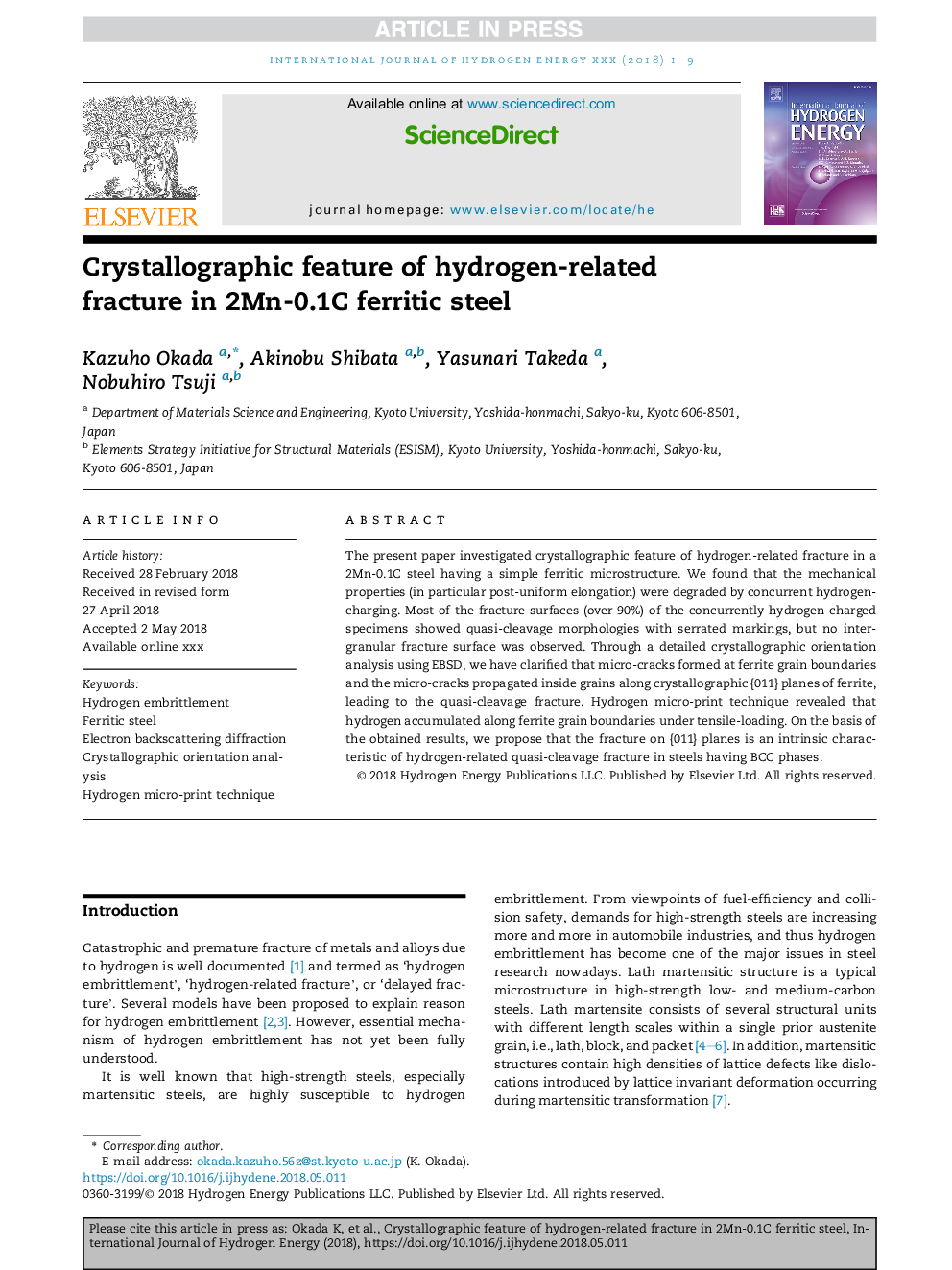| Article ID | Journal | Published Year | Pages | File Type |
|---|---|---|---|---|
| 7705837 | International Journal of Hydrogen Energy | 2018 | 9 Pages |
Abstract
The present paper investigated crystallographic feature of hydrogen-related fracture in a 2Mn-0.1C steel having a simple ferritic microstructure. We found that the mechanical properties (in particular post-uniform elongation) were degraded by concurrent hydrogen-charging. Most of the fracture surfaces (over 90%) of the concurrently hydrogen-charged specimens showed quasi-cleavage morphologies with serrated markings, but no intergranular fracture surface was observed. Through a detailed crystallographic orientation analysis using EBSD, we have clarified that micro-cracks formed at ferrite grain boundaries and the micro-cracks propagated inside grains along crystallographic {011} planes of ferrite, leading to the quasi-cleavage fracture. Hydrogen micro-print technique revealed that hydrogen accumulated along ferrite grain boundaries under tensile-loading. On the basis of the obtained results, we propose that the fracture on {011} planes is an intrinsic characteristic of hydrogen-related quasi-cleavage fracture in steels having BCC phases.
Related Topics
Physical Sciences and Engineering
Chemistry
Electrochemistry
Authors
Kazuho Okada, Akinobu Shibata, Yasunari Takeda, Nobuhiro Tsuji,
